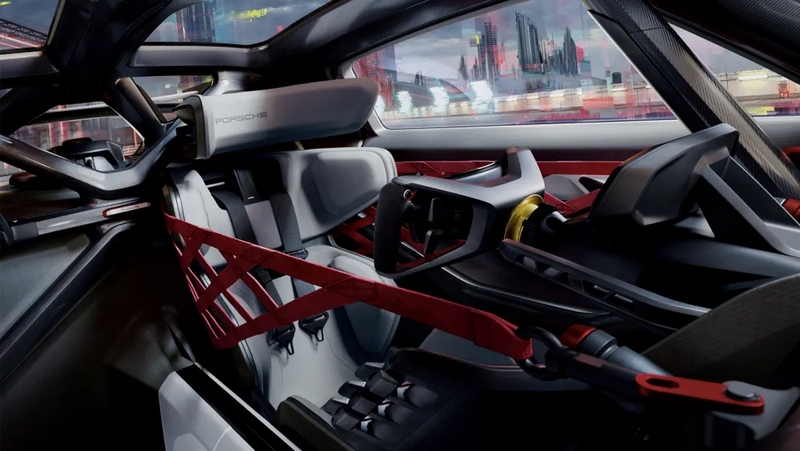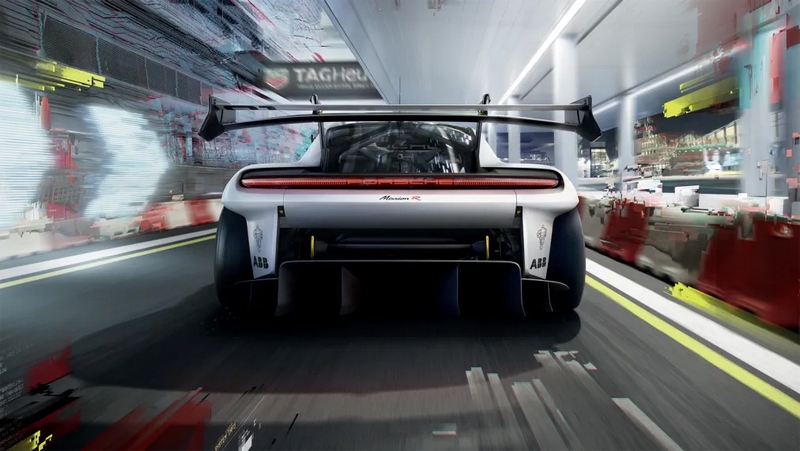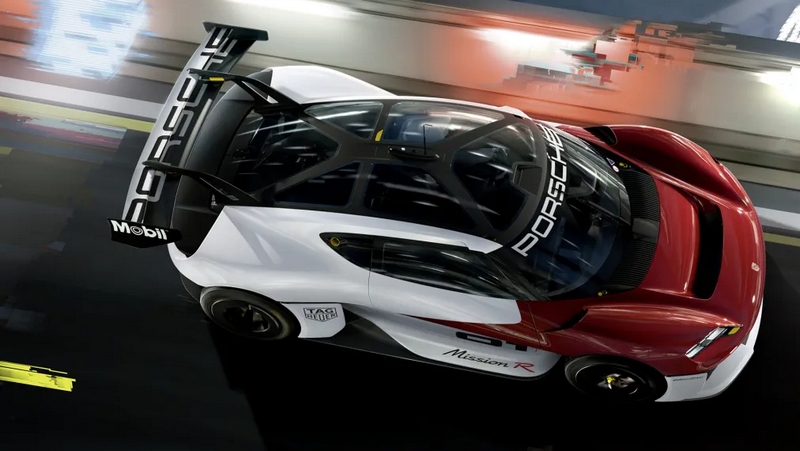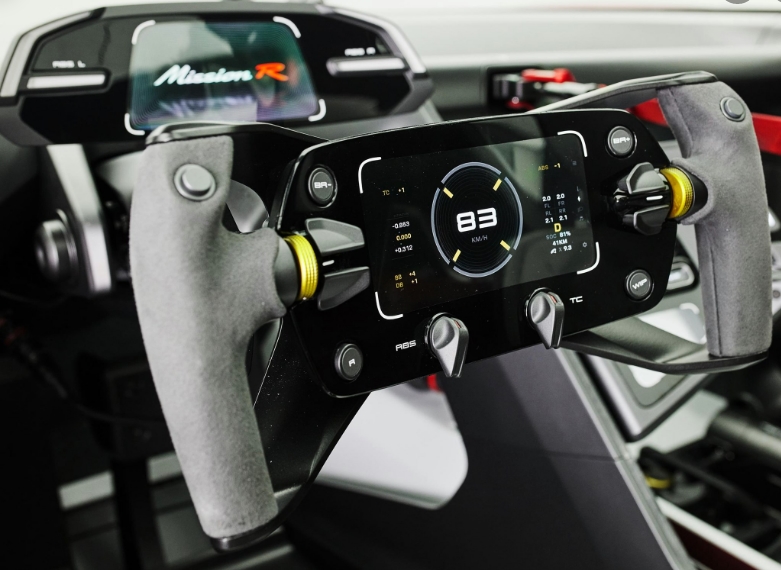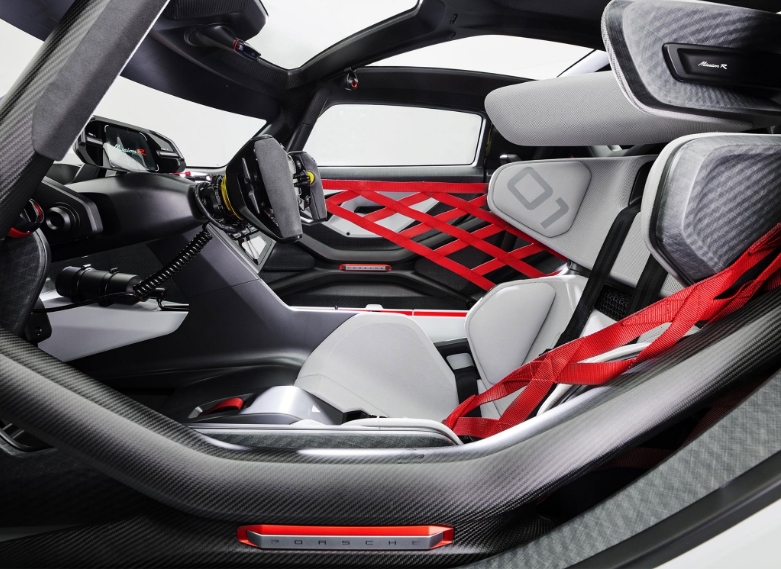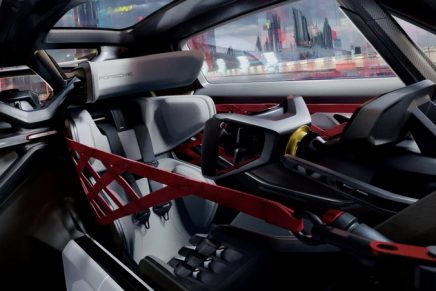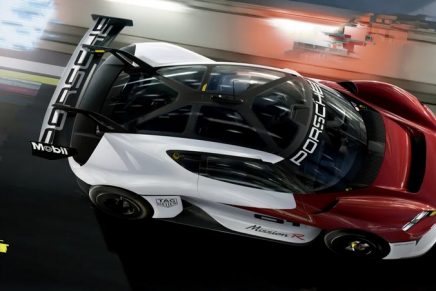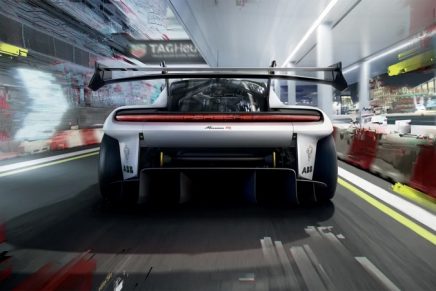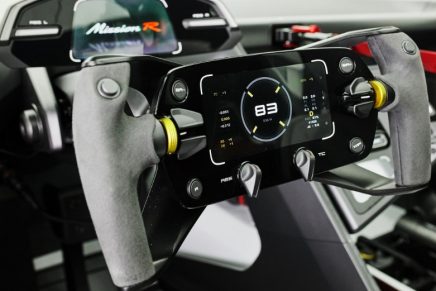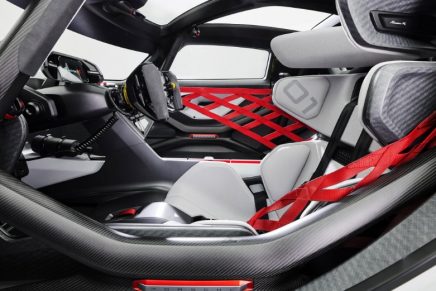fast forward future: Porsche reveals its vision for customer racing.
E-mobility at Porsche: the sustainable Mission R racing car
Highly connected and futuristically honed – this is a brand new breed of racecar. What lies within Porsche Mission R all-electric concept vehicle? Breathable seats that are designed to have the most contact possible with the driver. A steering wheel with curved OLED display. Capabilities to film multiple-perspective livestreams. A ‘live’ button for direct contact with fans.
Porsche’s involvement with Formula E demonstrates the automotive brand’s belief in motorsport’s electrified future.
Porsche Mission R proves that putting sustainability at the forefront of the process can be done without compromising on performance. And that will help
revolutionise how customers will interact with the sport in the years ahead.
The Mission R proves that an electric and sustainable approach to motorsport can perform at the highest levels of competition. The racecar concept is designed to conquer small, twisty tracks in racing sprints that last about 30 minutes. It’s a Porsche electric racecar designed to perform, carefully considered to be small in size, but big on driving dynamics. So it made sense that the same care was taken when it comes to the materials with which it is made. For example, with this concept race car Porsche has reduced its use of carbon fibre, that traditional weight-saving device in motorsport, in favour of natural fibres throughout the interior and exterior of the vehicle. Carbon fibre has many merits, but recyclability is not one.
And when it comes to its high-performance battery cells, Porsche is aiming to reduce the carbon footprint across both production and supply chains. Cellforce, a joint venture with battery pioneers Customcells, will drive research, development, and production of batteries in the future. Beyond the environmental benefit, this puts Porsche in the position to put its batteries to the ultimate test – their use in motorsport. And just as learnings from the Le Mans-winning 919 Hybrid and Formula E made their way into the Taycan, you can expect what Porsche is learning from the Mission R to one day find its way to public roads as a compact two-seater sports car.
In the future, cars based on the Porsche electric racecar, the Mission R, will run on Michelin tyres made from sustainable materials – like recycled tyres, natural rubber and even lemon rind. Michelin is developing its own ‘eco-design processes’ that reduce environmental impact at every stage, from raw material sourcing to road use, and eventual recycling. Their aim is to be 100% sustainable by 2050.
Of course, as it is electric, exhaust emissions aren’t a factor with the Mission R. Its pair of Porsche Magnetic Engines provide considerable amounts of torque, meaning that it has the power to accelerate with the very best of them. When it’s time for you to put the hammer firmly down on the track, you’ll find yourself pushed right back into your seat. And in corners? The Mission R boasts a recuperation potential of 800kW to efficiently squeeze the most out of every ride.

